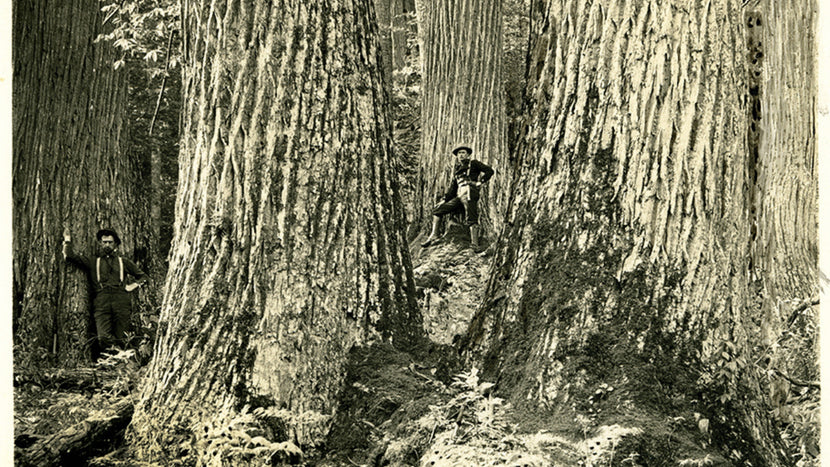
The Dunstan Chestnut Tree: A Resurgence of The American Chestnut Industry
In a world where deforestation, invasive species, the commercialization of land, and processed foods have become the norm, we wanted to take this Independence Day to highlight the importance of growing food in the truest of forms: planting trees. Specifically, we chose to dive into the origin and significance of the Dunstan Chestnut Tree.
Celebrated for its hardiness, resilience, and ecological impact, the Dunstan Chestnut Tree has sparked an American Landscaping resurgence and ultimately saved a dying industry of mass chestnut production. In this blog, we will explore the history of this remarkable tree and delve into the best practices for cultivating it.

History of the American Chestnut Tree
The American chestnut (Castanea dentata) was once a dominant species in the Eastern United States, known for its towering height(near 100 feet at maturity) and bountiful harvests of sweet, nutritious nuts. Huge swaths of land were dominated by these enormous trees that grew up to 100 feet tall and covered the extended Appalachian Mountain Range from southern Alabama to northern Maine. East of the Mississippi, land that didn’t belong to longleaf pine forests was blanketed by a thick quilt of American chestnut trees.
In the early 1900s, tragedy struck. An invasive fungal pathogen known as chestnut blight (Cryphonectria parasitica) devastated the American Chestnut Tree population. By mid-century, nearly 4 billion trees had succumbed to the blight. This mass destruction of this species dramatically altered the balance of the ecosystem as we knew it.

Introduction of The Dunstan Chestnut Tree
In response to this ecological disaster, efforts were made to breed blight-resistant chestnut trees. One of the most successful endeavors was led by Dr. Robert T. Dunstan, who crossbred surviving American chestnuts with Chinese chestnut trees (Castanea mollissima), known for their natural resistance to chestnut blight.
Over several decades, Dunstan and his team developed a hybrid that retained the desirable traits of the American chestnut while inheriting resistance to the blight from its Chinese counterpart. This hybrid became known as the Dunstan Chestnut Tree. Thus, the resurgence of a dying industry began!
Characteristics of the Dunstan Chestnut Tree
Dunstan Chestnut Trees have grown to be the most widely planted chestnut trees in America – likely because it inherits many favorable characteristics from both parent species:
- Size and Growth: It typically reaches heights of 40 to 60 feet with a spread of 30 to 40 feet.
- Nut Production: Produces abundant, sweet nuts larger than the Chinese chestnut and similar in size to the American chestnut.
- Disease Resistance: Shows strong resistance to chestnut blight, enabling it to thrive in areas where American chestnuts were once prevalent.
Best Practices for Growing Dunstan Chestnut Trees
Growing Dunstan chestnut trees requires attention to several key factors to ensure healthy growth and optimal nut production:
- Site Selection: Choose a location with well-drained soil and full sun exposure. Chestnut trees prefer slightly acidic soil (pH 5.5 to 6.5) but can tolerate a range of soil types.
- Planting: Plant bare-root or container-grown saplings in early spring, ensuring the planting hole is large enough to accommodate the roots without crowding. Water thoroughly after planting and apply a layer of mulch to retain moisture.
- Watering: Provide regular watering, especially during dry spells and the first few years after planting. Chestnut trees have moderate water needs and prefer evenly moist soil.
- Pruning: Prune young trees lightly to establish a strong framework and remove any damaged or crossing branches. Light pruning in the early years is essential to form a strong central leader structure. Mature trees may require minimal pruning to maintain shape and remove dead wood.
- Fertilization: Chestnut trees benefit from annual balanced fertilizer applications in early spring before new growth begins. Follow soil test recommendations to adjust nutrient levels accordingly.
- Pest and Disease Management: While Dunstan chestnuts are resistant to chestnut blight, monitor for other pests, such as chestnut weevils, and apply appropriate controls if necessary.
- Harvesting: Nuts typically mature in early fall and should be harvested promptly to prevent consumption by local wildlife. Store nuts in a cool, dry place for consumption or replanting.

Bringing Back The American Chestnut Tree
Today, while the American Chestnut Tree is considered functionally extinct, some are still alive, but they cannot reproduce. These living American Chestnut Trees are able to persist because the blight does not spread to the trees' root systems
The American Chestnut Foundation (TACF) is working to restore the American chestnut tree through scientific research and breeding. Their goal is to develop genetically diverse American chestnuts that are resistant to pathogens and to restore the tree to its native range in the eastern United States.
Conclusion
The Dunstan chestnut tree is a testament to nature's resilience and the ingenuity of horticultural science. Through careful breeding and selection, this hybrid species has revitalized the prospects of growing chestnuts in regions devastated by chestnut blight. By following best practices in planting and care, enthusiasts and farmers alike can contribute to the restoration and enjoyment of this historic and valuable tree.
Whether you're considering adding a Dunstan chestnut tree to your orchard or simply appreciating its role in ecological restoration, understanding its history and cultivation requirements enhances the appreciation of this remarkable species.
